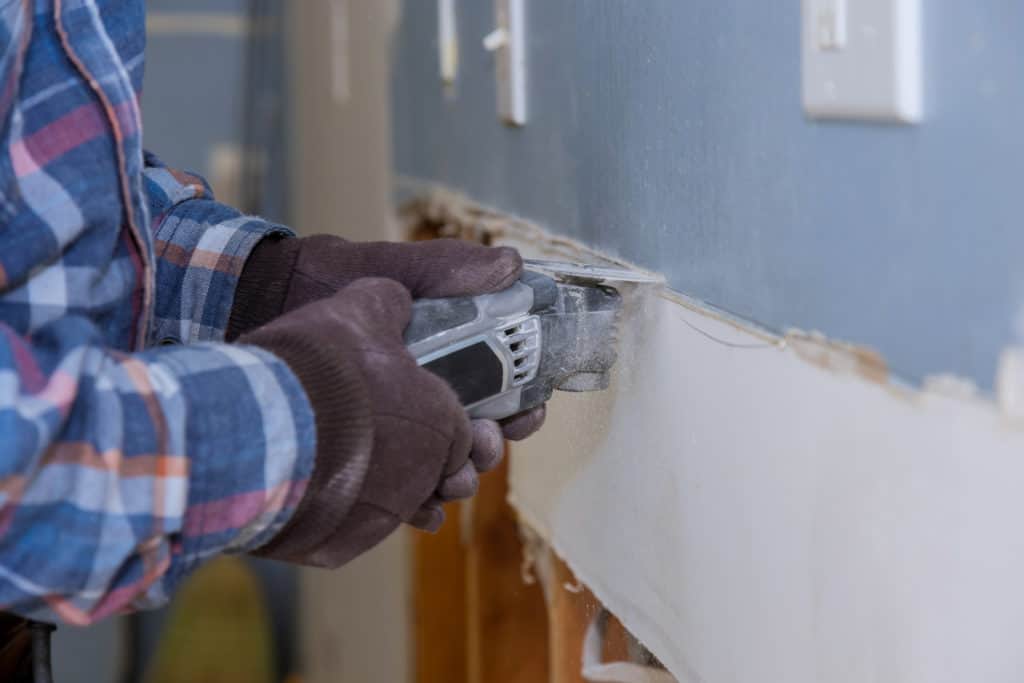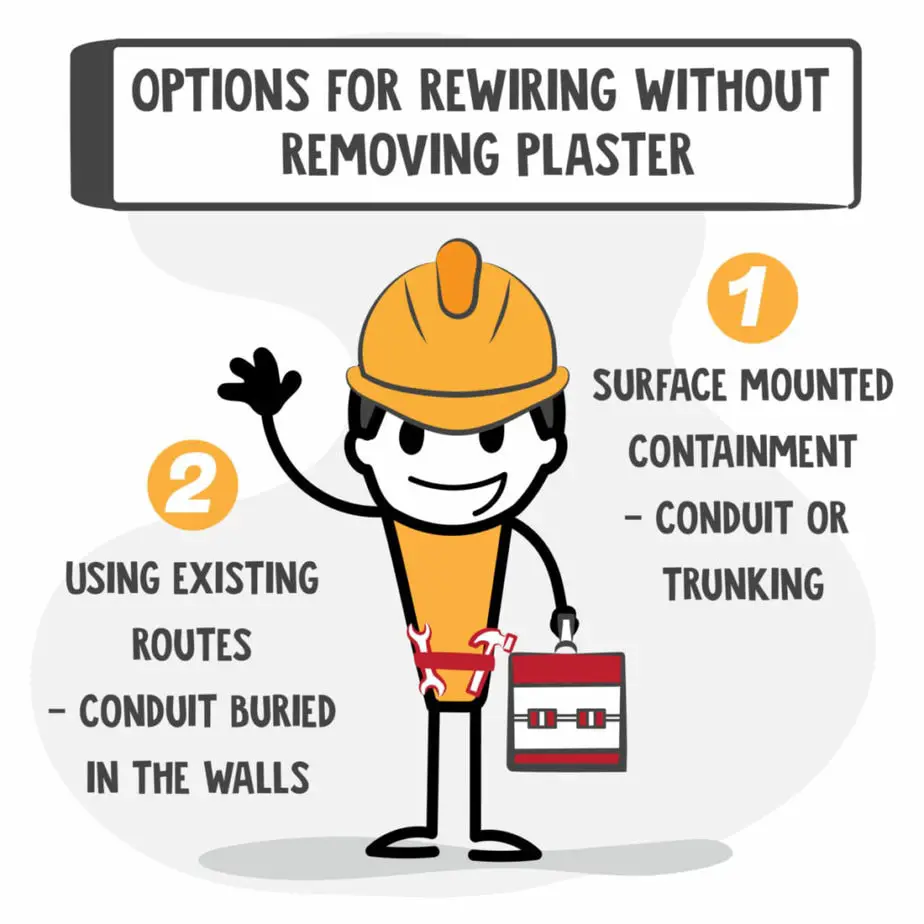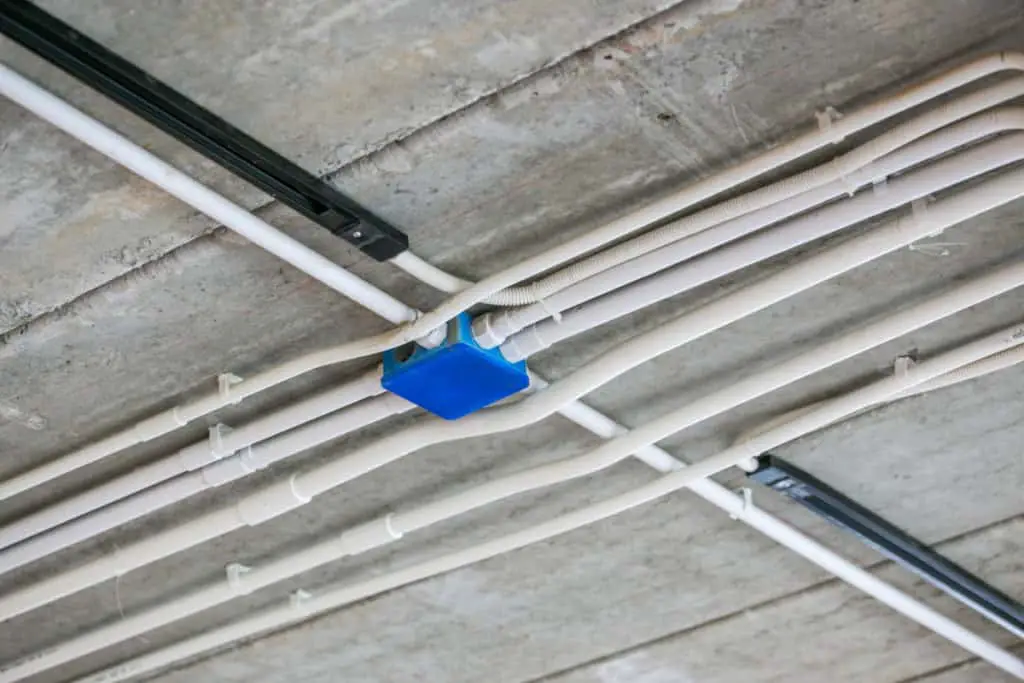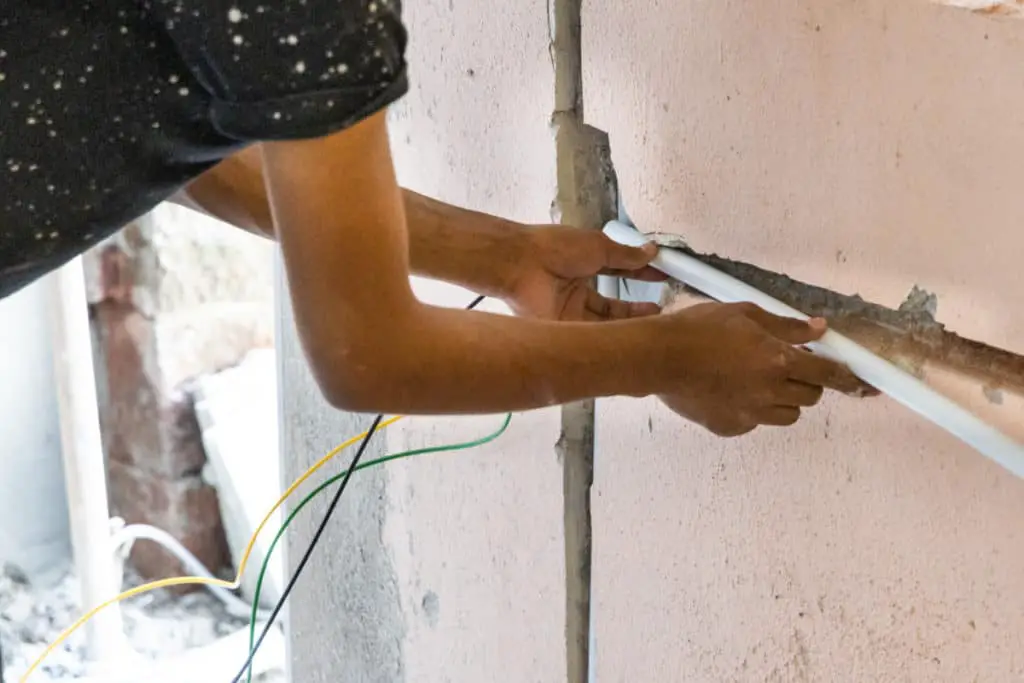My good friends are looking to buy their first home together and judging by the photos on Rightmove, the property looks in great decorative condition. However, it’s quite old and my friend thinks that the wiring could do with being updated, possibly a whole new rewire.
As it’s in a good decorative state he wanted to know, Can you rewire a house without removing plaster? As I was running him through the various scenarios and possible workarounds to prevent tearing down the walls during a rewire, it got me thinking this would make a good post; so voila!

Can You Rewire a House Without Removing Plaster?
Rewiring a house without removing plaster is possible, but the end result has compromises that most homeowners are not willing to accept. The old adage that you can’t make an omelette without breaking some eggs, holds true when it comes to house rewires.
I completely understand why homeowners would like to rewire without having to remove the plaster. When a house looks aesthetically great who wants to go to all the additional time and expense of tearing down walls just to replaster them again afterwards?
Although I can understand the wanting behind not removing the plaster, unfortunately, the practicalities of needing to get cables from A to B mean that some damage (albeit temporary damage) to the walls is required.
Someone on an electrical forum recently wrote, “anyone who says you can complete a rewire without removing plaster is talking total s!$t.” Whilst I don’t totally agree with this statement (as there are a few possible alternatives) it is a pretty accurate answer if you just need a two-sentence summary!
We’ll look at a couple of the options for rewiring a house while causing no damage to the walls below, but I’ll warn you in advance – they are not pretty.

Can an Electrician Rewire a House Without Removing Drywall?
An electrician can rewire a house without removing drywall but they will have to make some incisions into the wall. Like a surgeon operating on a patient, electricians are careful where they make their cuts but when finished, it is obvious that the wall has been through a major operation.
To say that we have to tear down walls in order to rewire a house is a bit of an exaggerated answer, but we certainly need to chase cable routes into the walls in order to bury the cables out of sight.
If the walls are the cavity type made of plasterboard or drywall, the mess is usually less severe but still exists. Electricians are usually experts in the art of fishing cables down cavity walls but the pesky horizontal woodwork that keeps the wall supported often causes problems.
When fishing a cable from above the ceiling (perhaps in the loft space) vertically down a cavity wall, the horizontal wooden supports almost always get in the way. To overcome the problem, we notch out a channel in the wooden support to let the cable pass. This means we must remove some of the drywall in the process.
Options For Rewiring Without Removing Plaster
As eluded to earlier, there are a few options for rewiring a house without damaging the walls, or at least causing less damage than a traditional rewire will do. All these options have good and bad points so it’s worth weighing them up in advance of shelling out any money on materials.
1. Surface Mounted Containment.

Surface-mounted containment comes in many different styles, the most well known being mini trunking or conduit. This containment is designed to be fixed onto the wall itself and then have the cables routed through it.
There’s little mess created, except for a few small fixing holes which hold it to the wall. But – and it’s a big but – it doesn’t look great having plastic tubing running all around your living room. Most homeowners aren’t willing to put up with the finished look of a surface-mounted rewire, which makes it rare in privately owned homes.
That being said, this method can be found in apartments due to issues accessing above the ceiling. In these cases, more discrete types of surface containment – like the type disguised as skirting boards (linked to on Amazon here) are often utilised. The final finish is often a hybrid mix of surface and traditional rewire which can look tidy when done right.
2. Using Existing Conduit In The Wall
It may be possible to route the cables through the conduit that is already in the wall from the original wiring. However – like the big but in the section above – this is a big maybe.
It’s usually only in much older homes that we find containment systems already buried in the walls. Even if we get lucky and it is there, trying to pull new cables through it can be very hard going.
If successful, there is no damage to the plaster or drywall during the rewire, and the cables are nicely hidden. However, another downside of this method is that the homeowner won’t be able to change the position of the socket outlets or light fittings etc.

Do You Need to Redecorate After Rewiring?
The vast majority of homeowners will need to redecorate after a rewire. Rewiring is an intrusive process usually burying cables out of sight within the fabric of the building. These buried cable channels, or wall chases as they are known, need to be covered up afterwards.
Chasing walls requires cutting channels within the walls either horizontally or vertically in order to get the cable from A to B. It can help to think of under the floorboards as the cable motorways and the chased channels in the walls as the exit roads that the cables travel down to get to their final destination.
These final exit roads that the cables travel down will all need to be re-plastered and redecorated after the rewire is completed.
I guess it’s worth pointing out there’s no regulation that states the house has to be redecorated after a rewire. Once the electrical work is complete it will be left in a safe state by the electrician, but most homeowners like nice smooth walls neatly painted – not walls covered in scars from their recent surgery.
The only scenarios I can think of where redecorating after a rewire would not be required would be if surface containment were solely used (even then, some minor painting will be most likely needed)
Final Thoughts
Although I like to explore every angle, and I’m sure someone somewhere can prove me wrong, in my opinion, the answer to the question, “can you rewire a house without removing plaster?” is basically no, for the majority of private homeowners.
I mention private homeowners because I have carried out rewires that did not require plaster to be removed or walls to be damaged, on behalf of local authorities (i.e in council houses.) In order to save costs, local authorities sometimes ask for a surface mounted rewire (explained earlier).
As the council tenant does not own the home they usually have little say in what the local council chooses or much of a voice on the aesthetic outcome of the finished rewire.
Also Read: Alternatives To Rewiring a House
I don’t think this little blog is the place to debate the rights and wrongs of this, but I bring it up to illustrate the point. It is possible to rewire without removing plaster and having to redecorate, but it is not an option I have ever seen a private homeowner willing to take.

